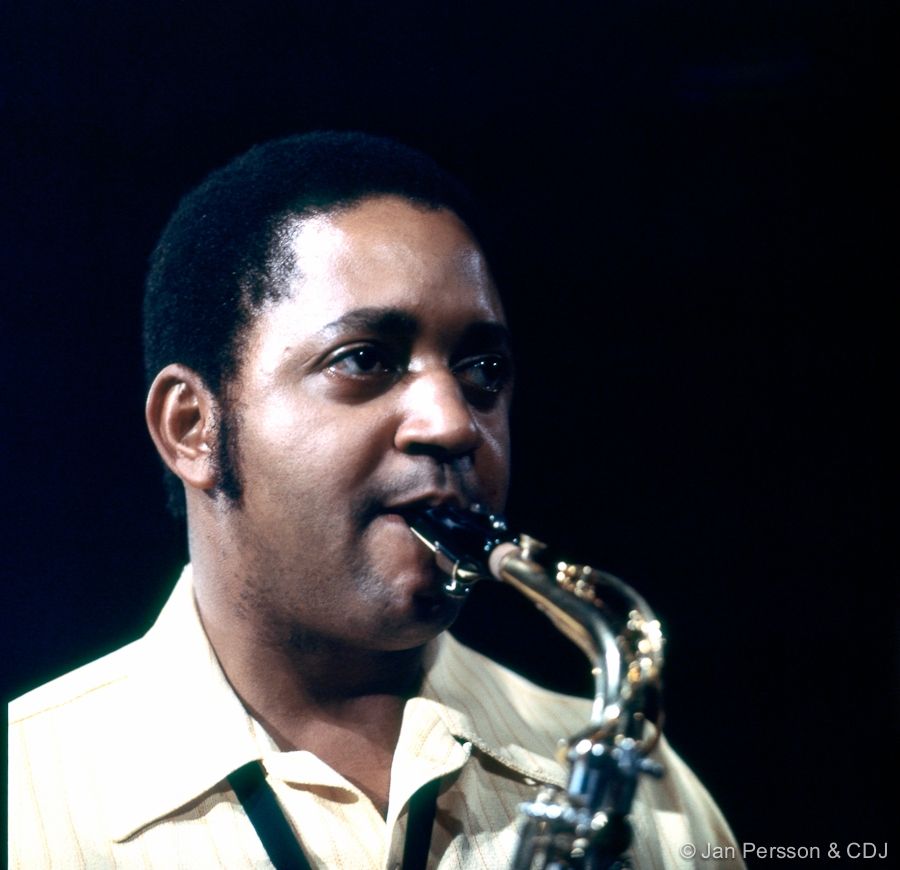Early years
Oliver Nelson was born on June 4, 1932 into a musical family in St. Louis, Missouri, United States. His brother was a saxophonist who played with Cootie Williams in the 1940s, and his sister sang and played piano. Nelson began learning to play the piano when he was six and started on the saxophone at eleven. In 1947, he played in "territory" bands in and around Saint Louis before joining the Louis Jordan band where he stayed from 1950 to 1951, playing alto saxophone.
Nelson and the military
In 1952, Nelson underwent military service in the United States Marines Corps playing woodwinds in the 3rd Marine Division band in Japan and Korea. It was in Japan that Nelson attended a concert by the Tokyo Philharmonic Orchestra and heard Maurice Ravel's Ma mere l'Oye and Paul Hindemith's Symphony in E Flat. Nelson later recalled that this "'was the first time that I had heard really modern music for back in St. Louis I hadn't even known that Negroes were allowed to go to concerts. I realized everything didn't have to sound like Beethoven or Brahms ... . It was then that I decided to become a composer'".
Musical Studies
Nelson returned to Missouri to study music composition and theory at Washington University in St. Louis and Lincoln University, graduating with a master's degree in 1958. Nelson also studied with composers Elliott Carter, Robert Wykes and George Tremblay. After completing his degree, Nelson moved to New York City, playing with Erskine Hawkins and Wild Bill Davis, and working as the house arranger for the Apollo Theater in Harlem. He also played on the West Coast briefly with the Louie Bellson big band in 1959, and in the same year began recording for Prestige Records as the leader of various small groups. From 1960 to 1961, he briefly played with Count Basie and Duke Ellington, and then joined the Quincy Jones big band playing tenor saxophone, both in the U.S. and on tour in Europe.
Recording and Arranging
After six albums as leader between 1959 and 1961 for the Prestige Records label, Nelson's big breakthrough came with The Blues and the Abstract Truth, an album recorded for Impulse! which featured Eric Dolphy, Roy Haynes and Freddie Hubbard, which made his name as a composer and arranger. Subsequently, he recorded a number of notable big-band albums including Afro-American Sketches and Full Nelson. Nelson worked as an arranger on large ensemble albums for Thelonious Monk, Cannonball Adderley, Sonny Rollins, Eddie "Lockjaw" Davis, Johnny Hodges, Wes Montgomery, Buddy Rich, Jimmy Smith, Billy Taylor, Stanley Turrentine, Irene Reid, and Gene Ammons.
Movies and TV
In 1967, Nelson moved to Los Angeles and began composing background music for tv and films. Television projects included Ironside, Night Gallery, Columbo, The Six Million Dollar Man and Longstreet. Films scored by Nelson include Death of a Gunfighter (1969), Skullduggery (1970), Dial Hot Line (1970), Zig Zag (1970) and The Alpha Caper (1973). He also arranged Gato Barbieri's music for Last Tango in Paris (1972). During this time he also arranged and produced albums for pop stars such as Nancy Wilson, James Brown, The Temptations, and Diana Ross.
Later years and Death
Nelson composed several symphonic works, and was also deeply involved in jazz education. He returned to his alma mater, Washington University, in the summer of 1969 to lead a five-week-long clinic that also featured such guest performers as Phil Woods, Mel Lewis, Thad Jones, Sir Roland Hanna, and Ron Carter. Among the student participants at the Washington University Summer Jazz Institute were saxophonists Julius Hemphill, Oliver Lake, and Hamiet Bluiett, who later co-founded the World Saxophone Quartet with David Murray. Nelson's book of jazz practice exercises, Patterns for Improvisation, was published in 1966 and remains highly regarded to this day. Oliver Nelson died of a heart attack on October 28, 1975 at the age of 43.
